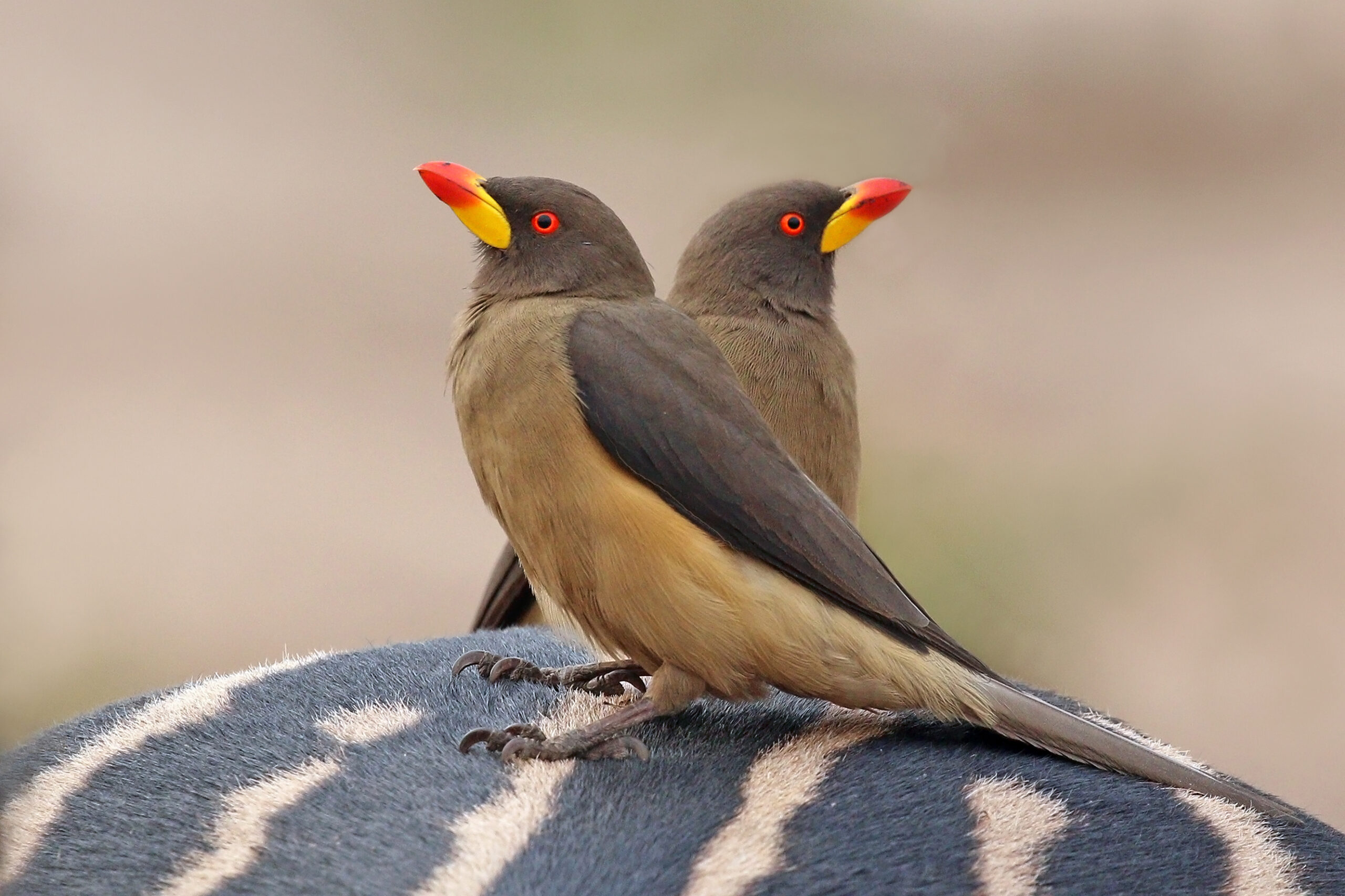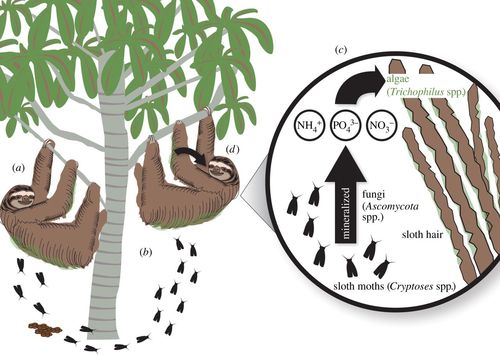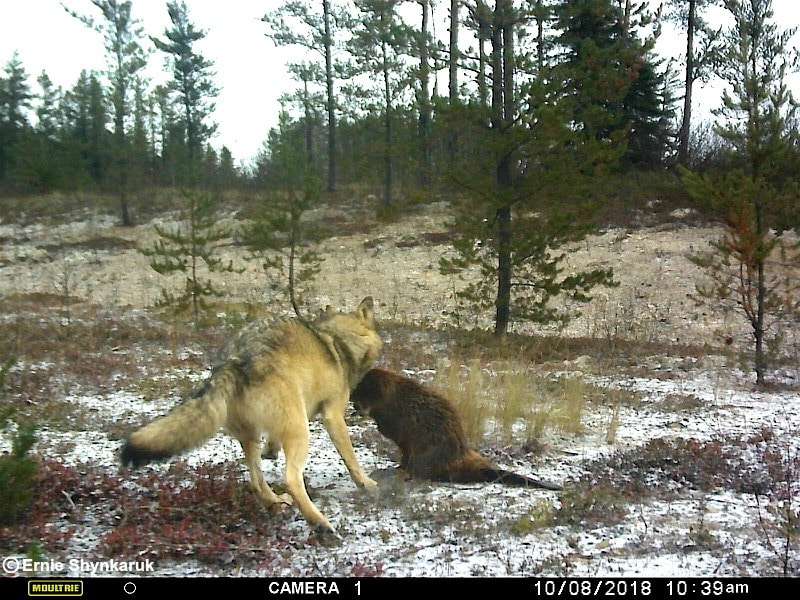Interspecies interaction definitions
Interactions between different species are known as interspecies interactions. All aspects of life depend on interspecies interactions. Ever since the dawn of life on Earth, species have been competing for resources, eating or being eaten, parasitizing, and collaborating with each other. Even the eukaryote cell, which is the most basic unit of all complex evolutionary lineages (Algae, Fungi, Plants, Animals), was created by an interspecies symbiotic association between different species of bacteria.
Interspecies interactions span from ecological networks that are important for conservation and biodiversity efforts, to pollination services that are important for agriculture, to pathogen interactions that are important for tracking the spread of diseases in humans, plants and animals. An organism cannot be understood in isolation from other species; it can only be understood if we know how it interacts with other species and its environment.
The interspecies interaction definitions outlined here are just to guide the platform user and in no way are meant to be the precise definition of each interaction type. Moreover, we are well aware that interaction types are not discrete but a continuum, and that interactions between two species can sometimes be assigned to different interaction categories. Please let us know if you think there is a better definition for any of the interaction types on the database, if you think we should add an interaction type, and/or if you think we should recategorize an interaction on the database.
-
-
Amenalism
Amensalism (a term introduced by Haskell) is an interaction where an organism inflicts harm to another organism without any costs or benefits received by itself.
More information Example Case -
Biofilms
A biofilm comprises any syntrophic consortium of microorganisms in which cells stick to each other and often also to a surface.These adherent cells become embedded within a slimy extracellular matrix that is composed of extracellular polymeric substances (EPSs).
More information Example Case -
Commensalism
Is an interaction in which one individual benefits while the other is neither helped nor harmed. For example, orchids (examples of epiphytes) found in tropical rainforests grow on the branches of trees in order to access light, but the presence of the orchids does not affect the trees. Commensalism can be difficult to identify because the individual that benefits may have indirect effects on the other individual that are not readily noticeable or detectable. If the orchid from the previous example grew too large and broke off the branch or shaded the tree, then the relationship would become parasitic.
More information-
Detritivory
A detritivore is a heterotrophic organism, which obtains its nutrition by feeding on detritus. Detritus is the organic matter made up of dead plant and animal material. Detritivores may also obtain nutrition by coprophagy, which is a feeding strategy involving the consumption of feces.
More information Example Case -
Dispersal Vector
A dispersal vector is an agent of biological dispersal that moves a dispersal unit, or organism, away from its birth population to another location or population in which the individual will reproduce.These dispersal units can range from pollen to seeds to fungi to entire organisms.
More information Example Case -
Scavenging
A scavenger is an organism that mostly consumes decaying biomass, such as meat or rotting plant material. Many scavengers are a type of carnivore, which is an organism that eats meat. ... Scavengers are a part of the food web, a description of which organisms eat which other organisms in the wild.
More information Example Case -
Symbiosis
A permanent commensalistic interaction.
Example Case
-
Detritivory
-
Competition
Competition is most typically considered the interaction of individuals that vie for a common resource that is in limited supply, but more generally can be defined as the direct or indirect interaction of organisms that leads to a change in fitness when the organisms share the same resource.
More information
-
Exploitation competition
Occurs when individuals interact indirectly as they compete for common resources, like territory, prey or food. Simply put, the use of the resource by one individual will decrease the amount available for other individuals.
Example Case -
Interference competition
When an individual directly alters the resource-attaining behavior of other individuals, the interaction is considered interference competition.
Example Case-
Allelopathy
Allelopathy refers to the beneficial or harmful effects of one plant on another plant, both crop and weed species, from the release of biochemicals, known as allelochemicals, from plant parts by leaching, root exudation, volatilization, residue decomposition, and other processes in both natural and agricultural systems.
More information Example Case -
Mutual antagonism
A relationship in which the effect of competition between two or more species (interspecific competition) exceeds that of competition within each species (intraspecific competition).
More information Example Case
-
Allelopathy
-
Exploitation competition
-
Domestication
Domesticator-domesticate relationships are specialized mutualisms where one species provides multigenerational support to another in exchange for a resource or service, and through which both partners gain an advantage over individuals outside the relationship.
More information Example Case

-
Microbiota
Microbiota are "ecological communities of commensal, symbiotic and pathogenic microorganisms" found in and on all multicellular organisms studied to date from plants to animals. Microbiota include bacteria, archaea, protists, fungi and viruses.
More information Example Case -
Mutualism
Mutualistic interactions, or mutualisms, are ubiquitous in nature. This type of species interaction involves the exchange of goods or services between two species, called mutualist partners. By definition, each species involved in a mutualism must receive a benefit from the interaction, and that benefit usually comes at a cost. However, mutualist partners do not necessarily receive equal benefits or incur equal costs. While the activities of each partner benefits the other species in some way, neither species behaves altruistically. Instead, each species pursues its own selfish interest, and any benefit incurred by the mutualist partner is an unintended consequence of the interaction. Darwin acknowledged that mutualistic interactions are not altruistic when he wrote in On the Origin of Species (1859), " . . . I do not believe that any animal in the world performs an action for the exclusive good of another of a distinct species, yet each species tries to take advantage of the instincts of others . . . ".
More information

-
Friendship
An interspecies friendship is a non-sexual bond that is formed between animals of different species. Domestication of animals has led to interspecies friendships between species that would never naturally exist together. In many cases of interspecies friendship, the pair of animals include those not known to get along, and sometimes, one is of a species that ordinarily preys upon the other in nature.
More information Example Case -
Frugivory
Frugivores are animals that eat fruit and benefit the fruit-producing plant by dispersing its seed.
More information Example Case -
Pollination
Plant-pollinator interactions are good examples of mutualistic interactions because nearly three-quarters of all extant flowering plants (angiosperms) receive pollination services from animals. Animal pollination is considered the ancestral form of pollination in angiosperms, and the rapid diversification of flowering plants that occurred 90–130 million years ago has been attributed, in part, to pollination mutualisms. The majority of animal pollinators are insects; bees, butterflies, moths, flies, wasps, and beetles are the most common insect pollinators. Many birds and bats are also important pollinator species. Plants always receive pollination services through the interaction, but the goods or services received by the animal pollinators vary. Most pollinators receive food in the form of pollen or nectar, but some bees also use waxes and resins from flowers to build their hives, and male euglossine bees use volatile compounds from orchid flowers as "perfume" to attract mates. Other insect species, such as yucca moths, lay their eggs within the yucca flowers they pollinate, and some, but not all, of the seeds produced are consumed by the developing moth larvae.
More information Example Case -
Symbiosis
Symbiosis is any type of a close and long-term biological interaction between two different biological organisms, be it mutualistic, commensalistic, or parasitic. A mutualistic symbiotic interaction is where both individuals benefit from the relationship (Be aware that sometimes the term "symbiosis" is used specifically to mean mutualism).
More information-
Corals
Although some corals are able to catch plankton and small fish using stinging cells on their tentacles, most corals obtain the majority of their energy and nutrients from photosynthetic unicellular dinoflagellates of the genus Symbiodinium that live within their tissues. These are commonly known as zooxanthellae and gives the coral color. Such corals require sunlight and grow in clear, shallow water, typically at depths less than 60 metres.
More information Example Case -
Ectosymbiosis
Symbiosis between the organisms occurs outside the bodies.
Example Case -
Endosymbiosis
Symbiont living with a host.
Example Case -
Lichens
Any of about 15,000 species of plantlike organisms that consist of a symbiotic association of algae (usually green) or cyanobacteria and fungi (mostly ascomycetes and basidiomycetes).
More information Example Case -
Mycorrhiza
Mycorrhiza is a symbiotic relationship between fungi and the roots of plant species. The fungi help the plants get the nitrogen they need while the fungi receives part of the carbon products produced by the plant. It has been suggested that 80% of vascular plants form relationships with mycorrhizal fungi. Yet the relationship can turn parasitic when the environment of the fungi is nutrient rich, because the plant no longer provides a benefit. Thus, the nature of the interactions between two species is often relative to the abiotic conditions and not always easily identified in nature.
More information Example Case -
Rhyzobium
Nitrogen fixing bacteria that associate with plants.
Example Case
-
Corals
-
Friendship
-
Parasitism
In parasitism, an individual organism, the parasite, consumes nutrients from another organism, its host, resulting in a decrease in fitness to the host. In extreme cases, parasites can cause disease in the host organism; in these situations, we refer to them as pathogens.
More information-
Brood parasitism
Brood parasites are organisms that rely on others to raise their young. The strategy appears among birds, insects and fish. The brood parasite manipulates a host, either of the same or of another species, to raise its young as if it were its own, using brood mimicry, for example by having eggs that resemble the host's (egg mimicry).
More information Example Case -
Disease
Parasites can cause disease in the host organism; in these situations, we refer to them as pathogens.
Example Case -
Ectoparasite
Parasite lives and feeds on the outside of the body of their host.
Example Case -
Endoparasitism
Parasite lives inside the body of their hosts.
Example Case -
Entomopathogenic
Entomopathogens are microorganisms that are pathogenic to arthropods such as insects, mites, and ticks. Several species of naturally occurring bacteria, fungi, nematodes, and viruses infect a variety of arthropod pests and play an important role in their management.
More information Example Case -
Hyperparasitism
It occurs when parasites are themselves infected with parasites.
Example Case
-
Brood parasitism
-
Predation
In predation, one organism kills and consumes another. Predation provides energy to prolong the life and promote the reproduction of the organism that does the killing, the predator, to the detriment of the organism being consumed, the prey.
More information
-
Carnivory
The best-known examples of predation involve carnivorous interactions, in which one animal consumes another.
Example Case -
Fungivory
Fungivory is the consumption of fungi material by animals.
Example Case -
Herbivory
Herbivory is the consumption of plant material by animals.
Example Case
-
Carnivory
